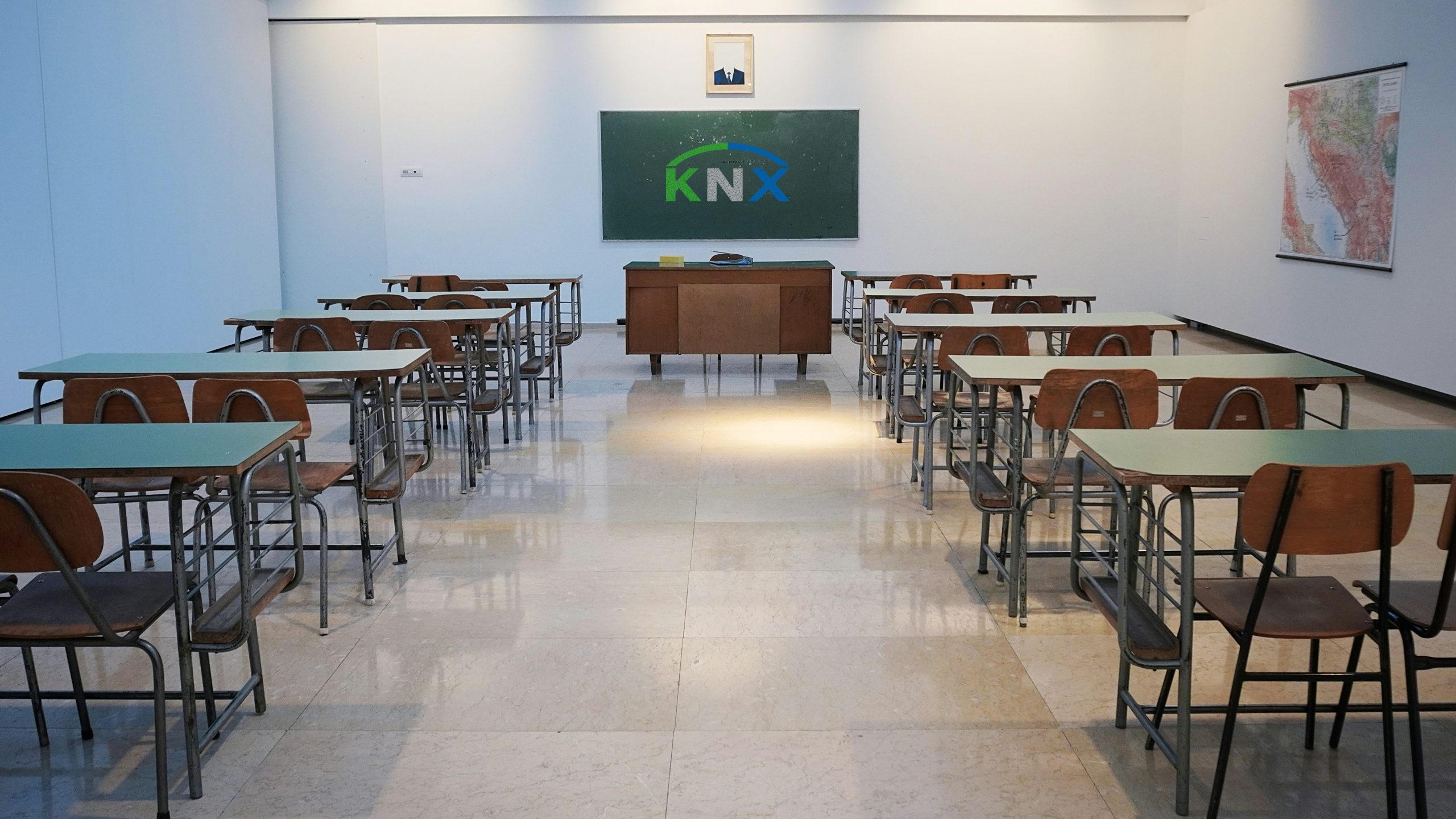Efforts to create stimulating learning environments in schools increasingly include innovative solutions to optimize energy consumption, while prioritizing student comfort and safety. One such solution that is gaining momentum is the implementation of KNX automation systems, which improves energy efficiency, especially during school hours.
KNX technology
Central to this approach are various sensors and control mechanisms aimed at reducing energy waste while maintaining optimal conditions in school premises. Let’s look at some of the key components and functionalities that contribute to the energy efficiency of school buildings:
CO2 sensors for indoor air quality
Monitoring the level of CO2 concentration is essential for maintaining indoor air quality in classrooms. CO2 sensors allow the system to monitor fluctuations and adjust ventilation accordingly. When levels rise, indicating the need for fresh air, the motorized windows automatically open to ensure a continuous supply of fresh air for students and staff.
Centralized control for natural ventilation
The central unit processes data from various sensors to devise an efficient window control strategy for natural ventilation. This intelligent system ensures that the windows open and close at the right time, balancing the need for ventilation and energy savings.
Automated lighting management
Lighting makes up a significant part of energy consumption in buildings. Integrating automated lighting control allows schools to optimize energy use by adjusting lighting levels based on natural light and occupancy. Dimming options further contribute to energy savings without compromising lighting quality.
Motion sensors for efficient lighting
Motion sensors play a key role in maintaining efficient lighting in classrooms and corridors. By detecting occupancy, these sensors ensure that lighting is only activated when needed, reducing unnecessary energy consumption during periods of low activity.
Data monitoring for renovation projects
KNX automation systems provide valuable data that can inform future renovation projects. By analyzing usage patterns and energy consumption trends, schools can identify areas for further optimization and implement targeted improvements to increase overall energy efficiency.
Water metering for sanitary facilities
In addition to electricity consumption, KNX automation systems also extend to monitoring water consumption in sanitary facilities. Monitoring water usage through dedicated water meters allows schools to identify leaks and inefficiencies, leading to water conservation efforts and cost savings.
In conclusion, the integration of the KNX automation system offers a comprehensive solution to address the energy efficiency needs of school buildings. By using smart sensors, centralized control mechanisms and data-driven insights, schools can create sustainable learning environments that prioritize energy conservation without compromising comfort or functionality. Explore real-life examples here.


